-
Recent Posts
- Trump’s “Big Beautiful Bill” Is a Grotesque Giveaway to Fossil Fuel Billionaires While Adding $3.3 Trillion to Nation’s Debt
- Senator Chris Murphy Charges that Trump “Has Opened a Channel for Bribery”
- Congressman Casten: Trump’s Assault on the Rule of Law Is Causing Capital Flight Out of U.S. by Foreign Investors
- Trump’s Approval Rating Drops to 80-Year Low; IMF Says U.S. Tariffs Now Exceed the Highs During the Great Depression
- Nasdaq Has Lost More than 3,000 Points Since Trump’s First Full Day in Office in 2025; the Pain Has Barely Begun
- The Bond Crisis Last Week Was a Global No-Confidence Vote in U. S. President Donald Trump
- Trump’s Tariff Plan Guts $5 Trillion in Stock Value in Two Days; Senator Warren Calls for Emergency Action Before Markets Open on Monday
- Trump’s Attacks on Big Law, Universities, and the Media Have a Common Goal: Silence Dissent Against Authoritarian Rule
- Trump Administration Gives All Clear to Laundering Money through Shell Companies and Bribing Foreign Officials
- Four Megabanks on Wall Street Hold $3.2 Trillion in Uninsured Deposits – Which May Explain Senator Schumer’s Pivot to the GOP to Stop a Government Shutdown
- Here’s What Came Crashing Down Yesterday for Trump’s “Genius” Guy, Elon Musk: Tesla Stock, Access to Twitter (X), His Years of Secret Calls with Putin
- After Banning the Associated Press, Trump Is Now Targeting Specific Journalists That He Wants to See Fired
- Closely Watched Atlanta Fed Model Predicts Negative U.S. Growth in First Quarter
- Trump’s Gangster Diplomacy Makes Front Page Headlines Around the Globe
- Who Benefits Alongside Elon Musk If He Succeeds in Killing the CFPB: the Megabanks on Wall Street that Underwrite His Tesla Stock Offerings
- In Trump 1.0, the State Department Used Taxpayer Money to Publish a Book Elevating Elon Musk to a Superhero; It Was Funded by USAID, the Agency Musk Wants to Quickly Shut Down
- News Host Joy Reid Raises Threat of Trump Selling U.S. to Putin; Ten Days Later Her Show Is Cancelled
- Elon Musk’s DOGE Appears to Be Violating a Court Order; It Has Taken Down Hundreds of YouTube Videos that Educate Americans on How to Avoid Being Swindled
- Barron’s Releases Audio of Jamie Dimon Cursing Out His Workers at a Town Hall, as Dimon Plans to Dump Another One Million JPM Shares
- There’s One Federal Investigative Agency that Neither Trump nor Elon Musk Can Touch: It Just Opened an Investigation into DOGE
- Elon Musk’s Companies Were Under Investigation by Five Inspectors General When the Trump Administration Fired Them and Made Musk the Investigator
- Donald Trump Gives the Greenlight to Goldman Sachs and JPMorgan Chase to Return to Bribing Foreign Officials
- After Tech Geeks Built a Back Door to Loot Billions from FTX, Republicans Refuse to Investigate What Elon Musk’s Tech-Squad Did Inside the U.S. Treasury’s Payment System
- Former Prosecutor, Now U.S. Senator, Informs Tesla That CEO Musk May Be Violating Federal Law and to “Preserve All Records”
- Trump’s Hedge Fund Guy Is Now Overseeing the U.S. Treasury, IRS, OCC, U.S. Mint, FinCEN, F-SOC, and the Consumer Financial Protection Bureau
- As Elon Musk Begins Shutting Down Payments to Federal Contractors, a Strange Money Trail Emerges to His Operatives Inside the U.S. Treasury’s Payment System
- JPMorgan Chase Charged by Yet Another Internal Whistleblower with Cooking the Books
- We Asked Google’s AI Search Model, Gemini, Questions About the Fed and Wall Street Megabanks: It Got the Answers Dead Wrong
- With Trump and Melania’s Crypto Coins Likely to Raise Legal Challenges, Why Didn’t Trump Fire the SEC’s Inspector General in His Purge of IGs?
- Fossil Fuel Industry Could End Up Paying Tens of Billions for LA Wildfires and Deceiving the Public on Climate Change for Decades
- It’s Being Called the Biggest Grift by a President in U.S. History: Trump and First Lady Launch their Own Crypto Coins
- Trump Plans to Install a Fracking CEO to Head the Energy Department and Declare a National Emergency on Energy to Gain Vast Powers
- Fossil Fuel Money Played a Role in the Los Angeles Fires and the Push to Install Pete Hegseth as Secretary of Defense
- When It Comes to Wealth Retention in Retirement, Concrete May Be the New Gold
- Wall Street Watchdog Warns “Clock Is Ticking on a Coming Catastrophic Financial Crash”
- Wall Street Is Sending the Same Message to Americans on Fossil Fuel Financing that It Sent on Cigarettes: Drop Dead
- In a Six-Week Span, this Dark Pool with a Curious Past Traded 3.7 Billion Shares
- Wall Street’s Lobby Firm Hired Eugene Scalia of Gibson Dunn to Sue the Fed for Jamie Dimon
- Postmaster General Louis DeJoy Made $561,051 in Compensation in 2024, as Mail Costs Spiked and Delivery Deteriorated
- Fed Chair Jay Powell Sends a Bold Message to Trump and Tanks the Dow by 1123 Points
- The Head of Fixed Income at T. Rowe Price Makes the Scary Case for the 10-Year Treasury to Spike to 6 Percent
- $663 Billion in Cash Assets Have Gone Poof at the Largest U.S. Banks
- Donald Trump to Ring Bell at New York Stock Exchange Today as Hit List Posters Appear in Manhattan Targeting Wall Street CEOs
- Trump Has a Slush Fund to Prop Up the Dollar – Will He Use It to Prop Up Bitcoin Instead?
- A CEO Assassination; a Billionaire Heiress/NYPD Commissioner; a Secret Wall Street Spy Center – Here’s How They’re Connected
- Despite More than 1600 Tech Scientists Signing a Letter Calling Crypto a Sham, Trump Names a Crypto Cheerleader for SEC Chair
- The Fed Rings a Warning Bell: Hedge Funds and Life Insurers Are Reporting Historic Leverage
- Trump’s Nominee for FBI Director, Kash Patel, Has Businesses Financially Intertwined with Trump
- Donald Trump Is at Risk of Getting Named in a Fossil Fuels Conspiracy Lawsuit
- Trump Is Having Difficulty Getting a Lawyer to Accept the Nomination for SEC Chair: Here’s Why
Search Results for: Federal Reserve
Without Registering as Stock Exchanges, Citadel Securities and Virtu Financial Account for More Stock Trading than the New York Stock Exchange
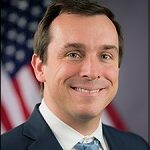
By Pam Martens and Russ Martens: March 29, 2022 ~ The above headline regarding Citadel Securities and Virtu Financial comes from a report authored by John Detrixhe that was published at Quartz in February of last year. The report found that as of December 2020 the New York Stock Exchange (NYSE) had a 19.9 percent share of stock market trading versus 13.4 for Citadel Securities and 9.4 percent for Virtu Financial. This gave Citadel Securities and Virtu a combined stock market trading share of 22.8 percent versus 19.9 for the NYSE. The big problem with this picture is that neither Citadel Securities or Virtu Financial are registered as stock exchanges and neither are regulated by the SEC as stock exchanges. Citadel Securities is a broker-dealer that pays for order flow from at least nine online brokerage firms and has a dubious history of regulatory fines and abusive behavior. Virtu Financial is … Continue reading
$13.7 Billion in Credit Default Swaps on Russia’s Debt Were Executed in 61-Day Span of 2021 as It Amassed Troops Around Ukraine

By Pam Martens and Russ Martens: March 22, 2022 ~ As the headlines in mainstream media grew ever more alarming in late 2021 regarding Russia’s troop buildup around Ukraine, approximately $225 million per day (or $13.7 billion over a span of 61 days) had been waged in bets that Russia might default on its sovereign debt. These bets are known as Credit Default Swaps and can be used to hedge exposure or simply speculate on a debt default in hopes of making a profit. This information resides in a publicly-available swap repository maintained by the Depository Trust and Clearing Corporation (DTCC). For the period of September 20, 2021 through December 19, 2021, the DTCC shows that an average of 26 trades per day were being made in the Credit Default Swaps on the Russian Federation’s sovereign debt, for a daily total of $225 million notional (face amount of credit default swaps). … Continue reading
After Promising More than a Week Ago to Shutter Operations in Russia, Nike and Others Can’t Seem to “Just Do It”
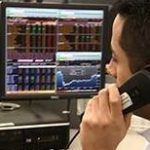
By Pam Martens and Russ Martens: March 14, 2022 ~ Nike can’t seem to take its own advice and “just do it.” On March 3 Reuters and the Wall Street Journal reported that Nike was temporarily closing its more than 100 stores in Russia. The Wall Street Journal carried this statement from Nike: “We are deeply troubled by the devastating crisis in Ukraine and our thoughts are with all those impacted, including our employees, partners and their families in the region.” This sounds like something one might say following an act of nature – like a hurricane or a flood. It doesn’t sound appropriate for a barbaric bombing attack by Russian President Vladimir Putin on hospitals, schools and apartment buildings in Ukraine that had left hundreds of civilians dead at that point. The day after Nike’s statement to the press, we could find no official statement on Nike’s website to indicate that it … Continue reading
Barbarians at the Gate – In Russia and on Wall Street
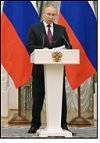
By Pam Martens and Russ Martens: March 10, 2022 ~ This morning Kremlin spokesman Dmitry Peskov told reporters on a conference call that the economic sanctions imposed on Russia by the West were “absolutely unprecedented.” He went on to say that those sanctions made it “very hard to forecast anything.” Perhaps Putin should have thought about that before he invaded the neighboring country of Ukraine and launched a barbaric bombing assault on hospitals, schools, churches and apartment buildings. There are a few things we can help Russia forecast. Given the fact that the Russian currency, the Ruble, has plunged 40 percent against the U.S. Dollar since Russia’s murderous assault on Ukraine began on February 24, and the fact that the Ruble has continued to set lower lows against the U.S. Dollar since then, it’s a pretty good bet that the Ruble is not going to find a bottom. The Ruble is … Continue reading
The Big Question on Wall Street Is Which Banks Owe $41 Billion on Credit Default Swaps on Russia
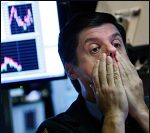
By Pam Martens and Russ Martens: March 7, 2022 ~ There is a known $41 billion in Credit Default Swaps (CDS) on Russian debt. There is likely many billions more in unknown amounts. There are also billions more in Credit Default Swaps on state-owned Russian corporate debt and non state-owned Russian corporate debt. In addition to Wall Street not knowing which global banks and other financial institutions are on the hook to pay out on the Credit Default Swap protection they sold in case of a Russian sovereign debt default (or Russian corporate debt default), there is also approximately $100 billion of Russian sovereign debt (whose default is looking more and more likely) sitting on the balance sheets of foreign banks. Put it all together and you have the makings of a replay of the 2008 banking crisis when banks backed away from lending to each other because they didn’t know … Continue reading
The Fed Just Added Short-Selling and Margin Loans to Its List of Trading Restrictions for Fed Officials – Opening a Big Can of Worms
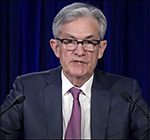
By Pam Martens and Russ Martens: February 22, 2022 ~ On October 21 of last year, when the Fed originally announced its list of trading restrictions that it planned to impose on Fed officials, it made no mention of restricting its officials from short-selling (making bets on a decline in price) or preventing Fed officials from trading on margin. But when the Fed announced its finalized rules last Friday, “short sales or purchasing securities on margin” were added to the list of prohibitions. Why do we find that noteworthy? Because it was Wall Street On Parade that asked the Dallas Fed if its President at the time, Robert Kaplan, was shorting the market when he made those “over $1 million” trades in and out of S&P 500 futures contracts in 2020, a year when the S&P 500 dropped by as much as 30 percent between January 2 and March 23. The … Continue reading
Banks Sink – Throwing More Cold Water on All That Talk that Megabanks Are a Great Investment

By Pam Martens and Russ Martens: February 18, 2022 ~ There are apparently stock-picking analysts across Wall Street pumping out buy recommendations on stocks to the public who have never cast their eyes on those chilling derivative charts published quarterly by the Office of the Comptroller of the Currency. If the analysts had cast their eyes on those charts, the last thing they would be recommending right now are megabank stocks. We’re talking specifically about JPMorgan Chase, Goldman Sachs, Citigroup, Bank of America and Morgan Stanley, which, together, control approximately 90 percent of the hundreds of trillions of dollars (notional/face amount) in derivatives held by all 4,900 banks and bank holding companies in the U.S. We’re also talking about the foreign banks that are significant derivative counterparties to these and other banks — such as Deutsche Bank, Credit Suisse, Nomura and Barclays. The chart above shows how these banks performed yesterday … Continue reading
Follow the Money Behind Senator Pat Toomey and His Boycott of the Vote on Fed Nominees
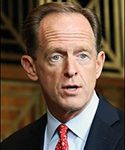
By Pam Martens and Russ Martens: February 16, 2022 ~ Yesterday, Senator Pat Toomey (R-PA), the Ranking Member of the Senate Banking Committee, orchestrated a boycott among his Republican colleagues on the Committee. Republicans refused to attend the scheduled vote at 2:15 p.m. yesterday for President Biden’s nominees to serve on the Federal Reserve. Without the presence of Republicans, the Committee lacked a quorum and could not vote. The nominees scheduled for a vote included Jerome Powell, for his second term as Fed Chair; Lael Brainard for Vice Chair; Sarah Bloom Raskin for Vice Chair for Supervision; Lisa Cook for Fed Governor; and Philip Jefferson for Fed Governor. Sandra Thompson, nominated to be Director of the Federal Housing Finance Agency, was also scheduled for a vote. Toomey’s main issue is with Sarah Bloom Raskin, who would be the Fed’s point person on supervision of the megabanks on Wall Street. The fear … Continue reading
Since the Fed Announced It Was “Tapering” Last November, It’s Actually Added $332 Billion in Liquidity with New Debt Security Purchases
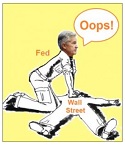
By Pam Martens and Russ Martens: February 15, 2022 ~ If you’re wondering why inflation is running hotter than it has in 40 years and why St. Louis Fed President James Bullard has broken with protocol and is openly criticizing the Fed on television for falling behind the curve on inflation, here’s a key part of that story. The Fed’s Federal Open Market Committee (FOMC) made its first announcement that it would begin “tapering” the amount of its purchases of Treasurys and Mortgage-Backed Securities (MBS) on November 3 of last year. On that date, according to the Fed’s own H.4.1 filing, it held $8.063 trillion in debt securities. As of last Wednesday, that figure had risen to $8.395 trillion or an increase (not decrease) of $332 billion in the span of just three months. The Fed’s practice of buying up debt securities from Wall Street firms in order to add cash … Continue reading
Brutal Stock Deterioration: 46 Percent of Nasdaq Stocks Are More than 50 Percent Below their 52-Week High

By Pam Martens and Russ Martens: February 14, 2022 ~ The stock market indices that get all the headlines have failed to capture the brutal deterioration that has been occurring for months among the individual stock components of those indices. In early February, Bank of America reported that 46 percent of Nasdaq’s component companies were more than 50 percent below their 52-week highs. And the deterioration in breadth began long before February. On December 28, 2021, Wall Street On Parade ran this headline: A Tale of Two Markets: S&P 500 Notches Its 69th Record Close as the Bottom Falls Out of the Nasdaq. We noted in the article that “On December 3 there were 585 new 52-week lows on the Nasdaq stock market versus 12 new 52-week highs. To look at it another way, 48.75 times more stocks were setting new 52-week lows than were reaching new 52-week highs. That doesn’t sound like the … Continue reading

